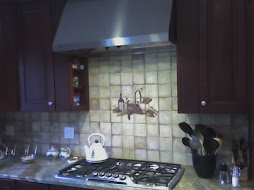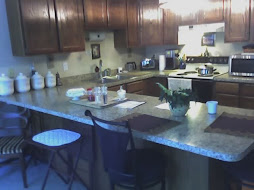Shopping at tile stores is a sensory experience. So many shapes, sizes, textures, patterns and colors to choose from; it's enough to make you dizzy. At first it's easy:
"Love that! Love those! No way I'd use them!" But then comes, "-- oh, I like those, too. These would look great in our bathroom. So would these, over here."
And that's just in the first five minutes of browsing the tile displays. When you consider the combinations and permutations, there are actually more tile choices than there are paint colors at Sherwin-Williams. One way or another, you have to...
Narrow the field.
Most folks start with a color scheme and a budget. That cuts the possibilities by at least half. Still leaves a couple thousand potential selections. Move on to texture: smooth or "natural" surface? Glossy or matte finish? Now you're down to just a few hundred possible tiles.
Size matters.
Tiny, small, medium, large or giant -- which one feels just right to your eye? Many popular tile offerings are available in every size, from one-inch mosaics to 16" platters. That allows the tile manufacturer please a large range of customers. Let's ignore all those other options, and consider this question partly from the do-it-yourselfer's point of view.
Each tile size has a reason for its existence. Some trace their origins back to the Roman Baths and Ancient Greece. Other sizes were standardized during the post-war building boom. Still more were created to suit the appetites of modern mall builders, who wanted to cover larger areas with fewer tiles. The rest exist simply because they are aesthetically pleasing.
Here's the run-down:
- Tiny tiles: Sheeted mosaics offer intriguing patterns of color and shape. They're easy to work with in most cases, because they require less difficult cutting. Typical sizes include one- and two-inch squares as well as similarly-sized octagons or hexagons. (The latter are more difficult to cut and fit.) Small tiles are often best for small spaces like kitchen counter top backsplashes or powder room floors, or for use as inset borders. In addition, web-mounted tiles allow the manufacturer to create intricate patterns that wouldn't work well with larger tiles.
- "Subway tiles" (see photo) are usually glossy rectangles in a specific proportion: 2 to 1 or 3 to 1, as well as 5 to 3, are typical (but certainly not the only choices). These classic tiles make an elegant choice for traditional walls. Matching base coves, outside corners and edging ("bullnose") trims are usually available for each color and finish. Subway tiles are almost always ceramic -- lightweight, inexpensive, self-spacing, and easy to work with.
- Until recently, builders have preferred ceramic squares in 4" or 6" sizes (see photo). They chose earth tones or elemental colors for more universal customer appeal. These "simple squares" are low-cost and easy to cut and install. They can be self-spacing or moved apart for larger grout lines, as desired. Generally, even non-stock colors can be ordered on short notice. Because the geometry is straight-forward, these tile sizes lend themselves to "checker-board" designs or "picture-framed" border layouts.
- Larger rectangles offer a visual change-up from more familiar tile patterns. Standard sizes include 4 x 6, 6 x 8, and 8 x 10 (inches). These non-square tiles look great laid vertically, horizontally, and even in "brick"-style patterns. While ceramics are readily available, medium-sized tiles like this are more often displayed in porcelain lines. Porcelain tiles are heavier, more durable, less absorbent -- and harder to work with -- than standard ceramics. Installers will usually use tile spacers and cement-based "thin-set" mortar for best results.
- Big tiles start at 12" square and go up from there. One popular size is 13.5" square, which probably converts to some whole number of centimeters. Paver-sized tiles were once reserved for large rooms, commanding foyers, malls, and restaurants. Now they are one of the top choices by designers for contemporary homes. Large and giant tiles are heavy, expensive, subject to shipping damage, and more difficult to install.
- Preparation becomes critical as tile dimensions increase. DIY-level tile saws are often too small to accept these products for cutting. Layout can be tricky, to avoid weird edge-cuts and ungainly "L"s around corners. On the other hand, these (usually porcelain) tiles are incredibly durable, even for outdoor use. And they're gorgeous.
copyright 2009 - all rights reserved. Reprints available upon request.
_______________________________________________
For more information about tile floors and walls, have a look at the DIY Tile Zone in Betaville, at Helium.com. If you have questions or other feedback, please leave a comment here or on the tile zone.
+edit.jpg)











.jpg)



If you are looking at redecorating your kitchen, you need to check out the kitchen backsplash tile designs at http://www.glasstilewarehouse.com/. They are unbelievable! My wife and I just purchased from them and we couldn’t be happier.
ReplyDeleteThanks for the share. Great stuff, just nice!
ReplyDeleteHexagonal floor Tile
Thanks for sharing a nice information.
ReplyDeleteTerazo